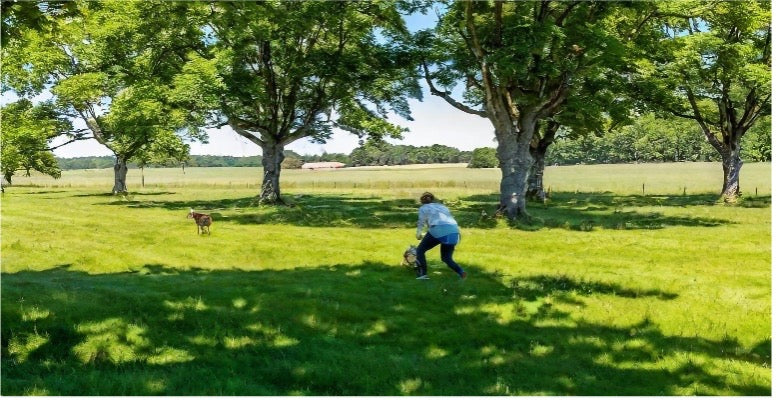Beat the Bite - Avoid Tick Bites and Lyme Disease

Summer is rapidly approaching, and the great outdoors is beckoning you. Camping, hiking in the woods, reading a good book under a tree, and walking your dog along a less-traveled path can set you up for one of the most debilitating vector-borne diseases in the United States-Lyme disease.
There are some easy ways to prevent becoming prey to this insidious and tiny predator.
(Hint: TWC Medical Emergency Kit and Organic Essential Oils Kit can help)
What is Lyme Disease?
Lyme disease is a bacterial infection caused by Borrelia burgdorferi and, in rare cases, Borrelia mayonii. It is the most common vector-borne disease in the United States and Canada It is a disabling disease that many don’t realize they have until it is too late. Luckily, if you are in an area that is known for cases of Lyme disease, a prophylactic dose of doxycycline (one of the antibiotics in our Medical emergency Kit) can be given to prevent the onset of Lymes. This dose should be administered within 72 hours of the tick bite to be effective (1,2,3)
How is Lyme Disease Contracted?
Lyme disease is transmitted through the bite of infected black-legged ticks. These ticks must be attached to the host for 36 to 48 hours or more to transmit the bacteria. If you do contract Lyme disease, a course of doxycycline is usually prescribed to treat Lyme. The Medical Emergency kit contains an ample supply to treat if you do contract Lyme. (Always consult your care provider before initiating any antibiotic therapy)
United States: Lyme disease is most common in the Northeast, upper Midwest, and along the Pacific coast. States like Maine, Vermont, and New Hampshire have seen significant increases in cases


(Map from Canada Public Health Services)

Symptoms of Lyme Disease
The symptoms of Lyme disease can vary widely and are often categorized into early and late stages:
- Early Symptoms (3 to 30 days after tick bite)
- Erythema migrans (EM) rash occurs in only 70-80% of infected individuals. It begins at the site of the tick bite and expands gradually, sometimes clearing in the center to form a "bull's-eye" appearance. Just because you don’t have a rash doesn’t mean you haven’t contracted Lymes. (check this site for the many different rashes Lyme can present)
- Flu-like symptoms: Fever, chills, headache, fatigue, muscle and joint aches, and swollen lymph nodes.
Later Symptoms (days to months after tick bite)
- Severe headaches and neck stiffness
- Additional EM rashes on other areas of the body
- Facial palsy (loss of muscle tone or droop on one or both sides of the face)
- Arthritis with severe joint pain and swelling, particularly in the knees
- Heart palpitations or an irregular heartbeat (Lyme carditis)
- Nerve pain, shooting pains, numbness, or tingling in the hands or feet.
- Emotional disturbances
- Sleep disturbances
- Difficulty in speech recall
- Memory disturbances
In some cases, Lyme can persist even after post-antibiotic therapy. It is much better to practice preventative measures.
Prevention of Lyme Disease
Avoid tick-infested areas: Stay away from wooded, brushy, and grassy areas, especially during warmer months. Ticks are also known to be in overhanging tree branches. Take care if you decide to have that picnic under a tree. Inspect hair and clothing for ticks, along with any items you may have brought with you.
Wear protective clothing: Light-colored clothing helps spot ticks more easily. Wear long-sleeved shirts, long pants, and closed shoes. Tuck pant legs into socks or boots.
Perform tick checks: After spending time outdoors, check your body for ticks, especially in hard-to-see areas like the groin, armpits, and scalp (CDC, 2024).
Use insect repellents: The two most effective tick repellents are DEET and permethrin, both of which have questionable safety profiles. Nonetheless, if you are in a tick country and will only be applying the repellent occasionally, even these choices may be better than the risk of contracting a tick-borne disease. DEET-based repellents also last 2-3 times as long as natural repellents. (4)
Essential oils as effective tick repellants
- Our Origin series of 6 organic essential oils contain several proven and effective oils (lavender, eucalyptus, lemongrass, that when applied topically (with carrier oil) or on clothing can be as effective as DEET and other repellants. The only drawback is in order to be effective; you must apply every 2 hours.
- Eucalyptus Oil (5)
- Lavender Oil (6)
- Lemongrass Oil (7)
(use caution with children and pets)
References
- Centers for Disease Control and Prevention. (2022). Tickborne diseases of the United States: A reference manual for healthcare providers (6th ed.). Retrieved from https://www.cdc.gov/ticks/tickbornediseases/TickborneDiseases-P.pdf
- Lindsay, L. R. (2016, October 6). Present state of common vector-borne diseases in Canada. Canada Communicable Disease Report, 42(10), 200-201. Retrieved from https://www.canada.ca/en/public-health/services/reports-publications/canada-communicable-disease-report-ccdr/monthly-issue/2016-42/ccdr-volume-42-10-october-6-2016/ccdr-volume-42-10-october-6-2016-emerging-challenges-vector-borne-diseases-cities-2.html
- Centers for Disease Control and Prevention. (n.d.). Lyme disease prophylaxis after tick bite. https://www.cdc.gov/lyme/resources/pdfs/lyme-pep-low-ink-p.pdf
- Centers for Disease Control and Prevention. Lyme Disease. https://www.cdc.gov/lyme/index.html
- Selles, S. M. A., Kouidri, M., González, M. G., González, J., Sánchez, M., González-Coloma, A., Sanchis, J., Elhachimi, L., Olmeda, A. S., Tercero, J. M., & Valcárcel, F. (2021). Acaricidal and repellent effects of essential oils against ticks: A review. Pathogens, 10(11), 1379. https://doi.org/10.3390/pathogens10111379
- Selles, S. M. A., Kouidri, M., González, M. G., González, J., Sánchez, M., González-Coloma, A., Sanchis, J., Elhachimi, L., Olmeda, A. S., Tercero, J. M., & Valcárcel, F. (2021). Acaricidal and repellent effects of essential oils against ticks: A review. Pathogens, 10(11), 1379. https://doi.org/10.3390/pathogens10111379
- Centers for Disease Control and Prevention. (2024). Efficacy of unregulated minimum risk products to kill and repel ticks. Emerging Infectious Diseases, 30(1). Retrieved from https://wwwnc.cdc.gov/eid/syn/en/article/30/1/23-0813.htm
Written by Brooke Lounsbury




